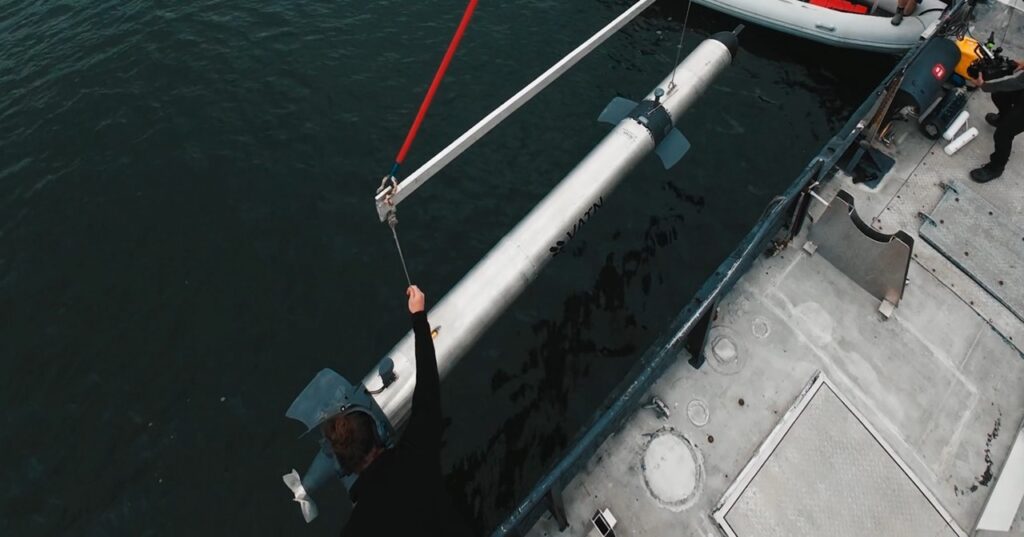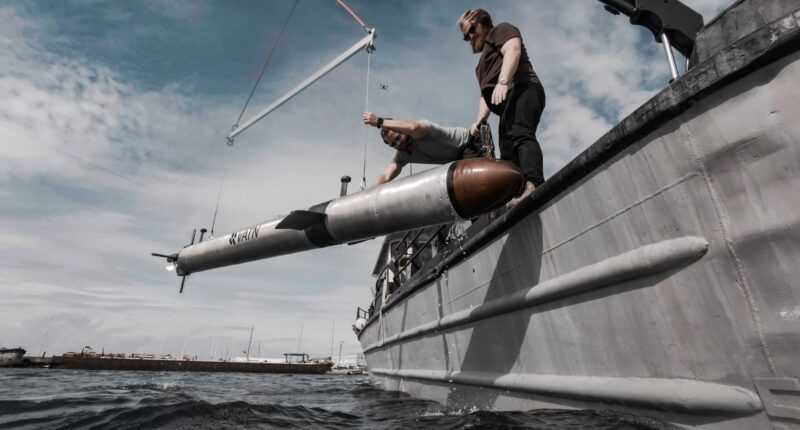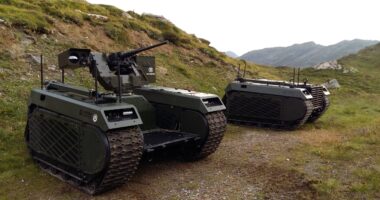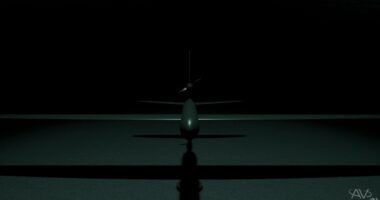

Undersea warfare is getting a flexible new player.
Rhode Island-based Vatn Systems has unveiled the “Skelmir S12,” a modular underwater vehicle designed to switch between roles — from torpedo to sensor platform to an electronic warfare (EW) tool.
With a diameter of 12.75 inches (32 centimeters), the platform can be launched from submarines, surface vessels, or aircraft.
It also boasts a top speed exceeding 30 knots (55 kilometers/34 miles per hour) and can carry various payloads for improved mission flexibility.
“With the Skelmir S12, we set out to fill a critical market void — creating a vessel that merges the capabilities of a traditional AUV (autonomous underwater vehicle) with the agility and performance of a lightweight torpedo for a fraction of the cost,” said company co-founder and CEO Nelson Mills.
AUV Variant
In its AUV configuration, the Skelmir stretches between 14 and 20 feet (4 to 6 meters) and weighs 600 to 800 pounds (272 to 362 kilograms).
It is built for range and endurance — capable of traveling more than 200 nautical miles (230 miles/370 kilometers) while carrying over 200 pounds (90 kilograms) of payload.

But its real strength? The ability to operate in tough conditions.
It can shrug off shocks, resist jamming, and dive past 300 meters (984 feet).
Vatn completed a first trial of the AUV earlier this year. The initial production run was snapped up by government customers, with deliveries set for 2025.
Torpedo Variant
The torpedo variant is being pitched as a potential successor to the widely fielded MK 54, currently used by India, Saudi Arabia, and Germany.
It is smaller — about 9 feet (2.7 meters) long — and can deliver precision strikes at distances beyond 100 nautical miles (115 miles/185 kilometers).
It also uses advanced sonar seekers to accurately detect and track targets and has the same 200-pound (91 kilograms) payload capacity.
Vatn expects to begin deliveries of the torpedo variant in 2026.

Scaling Up Production
Vatn is also investing in accelerated production of the Skelmir S12s.
The company has constructed a new manufacturing facility capable of building more than 2,000 units per year, well above current industry output levels for comparable systems.
The facility will use AI-backed production tools developed in partnership with defense tech company Palantir.
The goal is faster output, better quality control, and smoother scaling as demand increases.
“By leveraging modular design and vertically integrated production, we’re able to reduce lead times, minimize handoffs, and eliminate many of the inefficiencies common in traditional assembly processes,” said manufacturing director Brendan Smith.
The site is expected to reach full production by July 2025.









